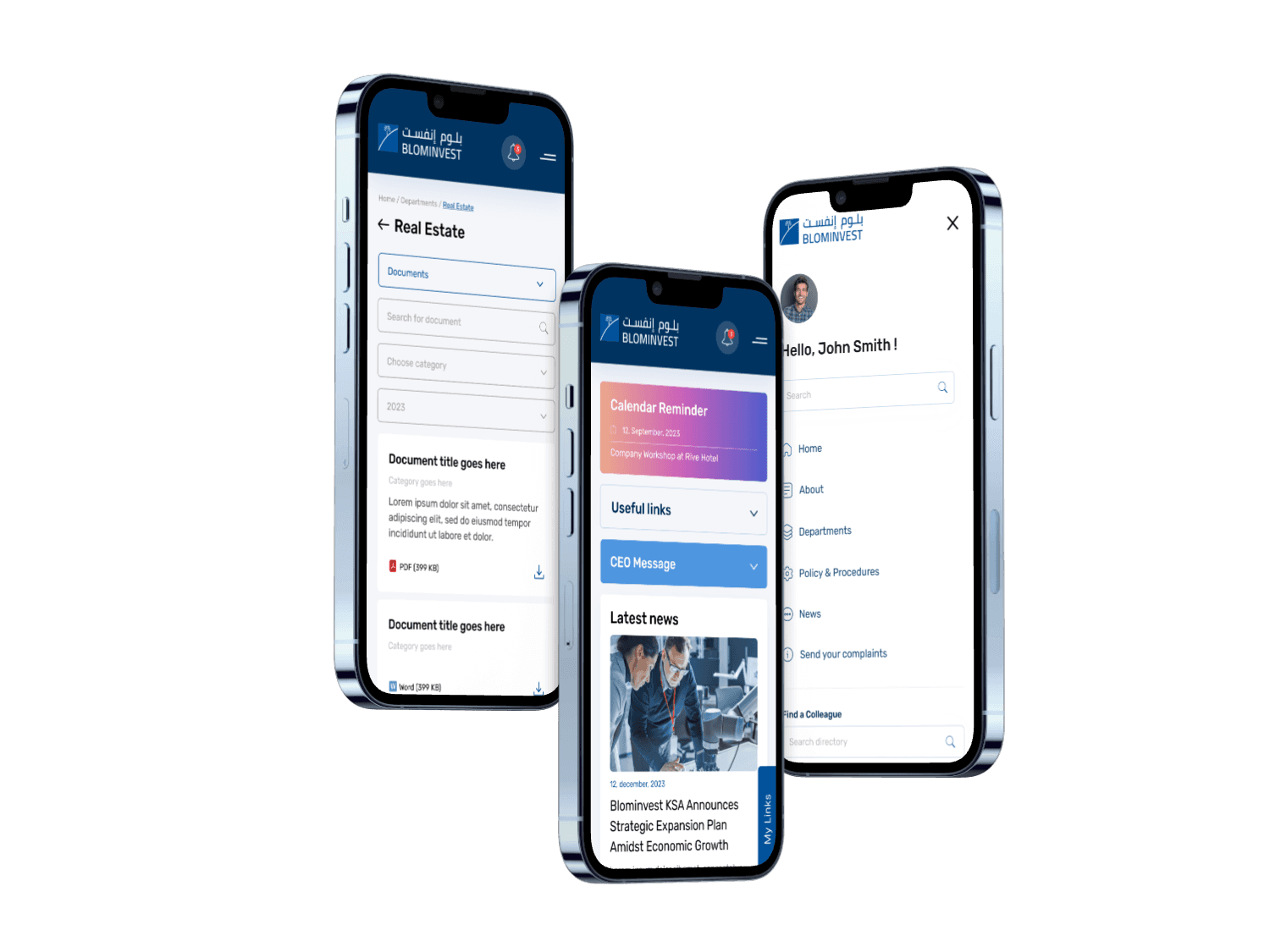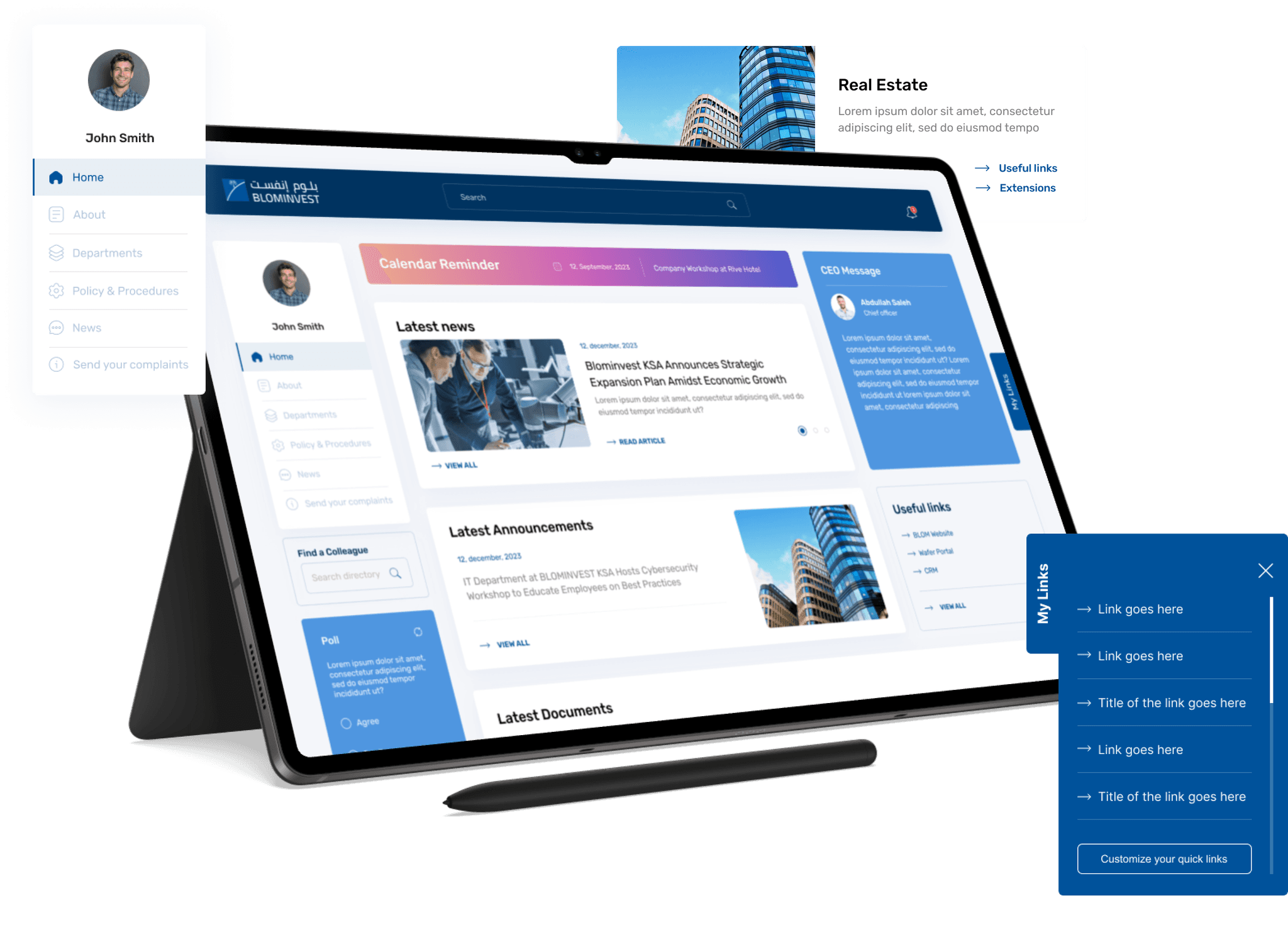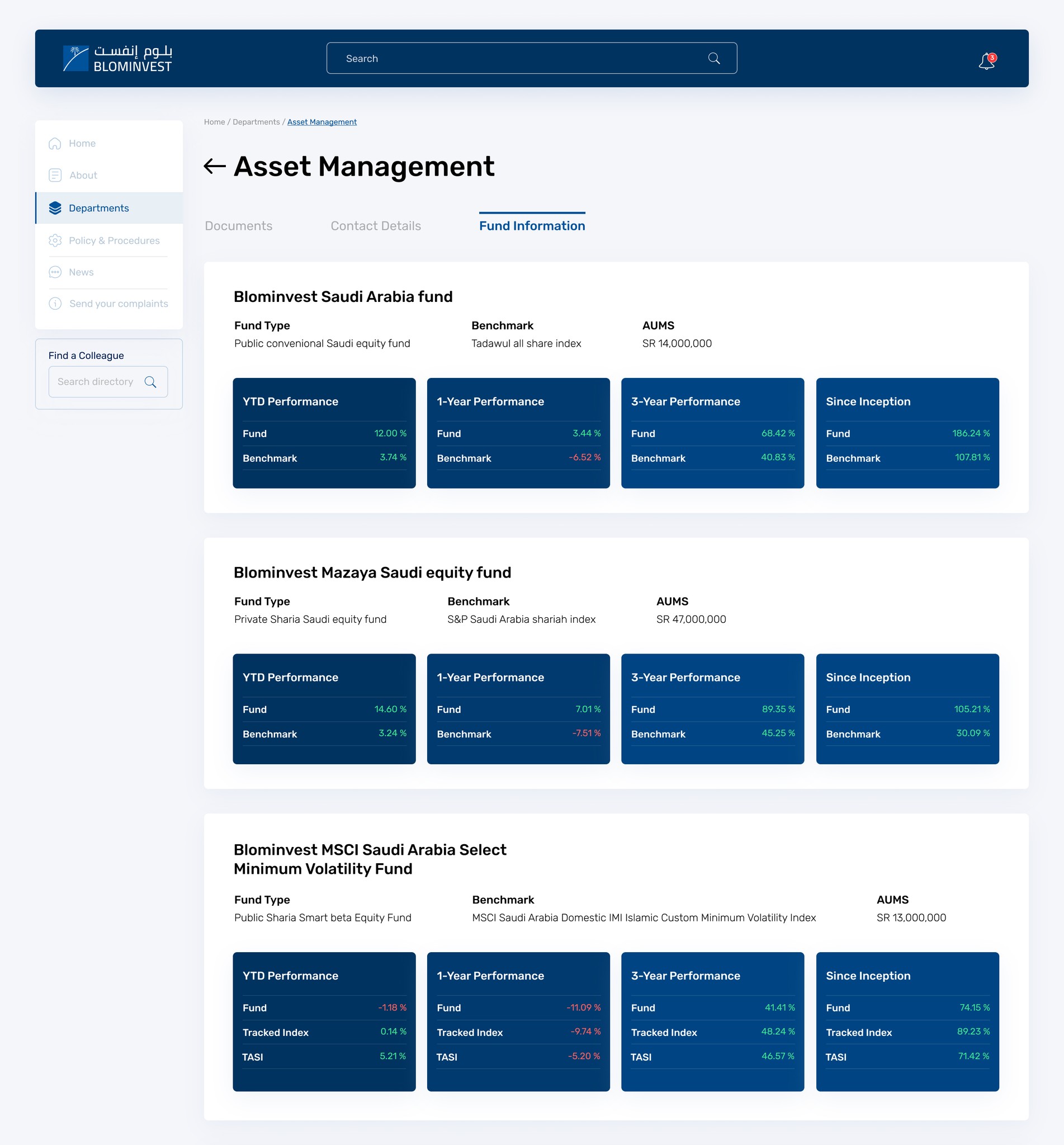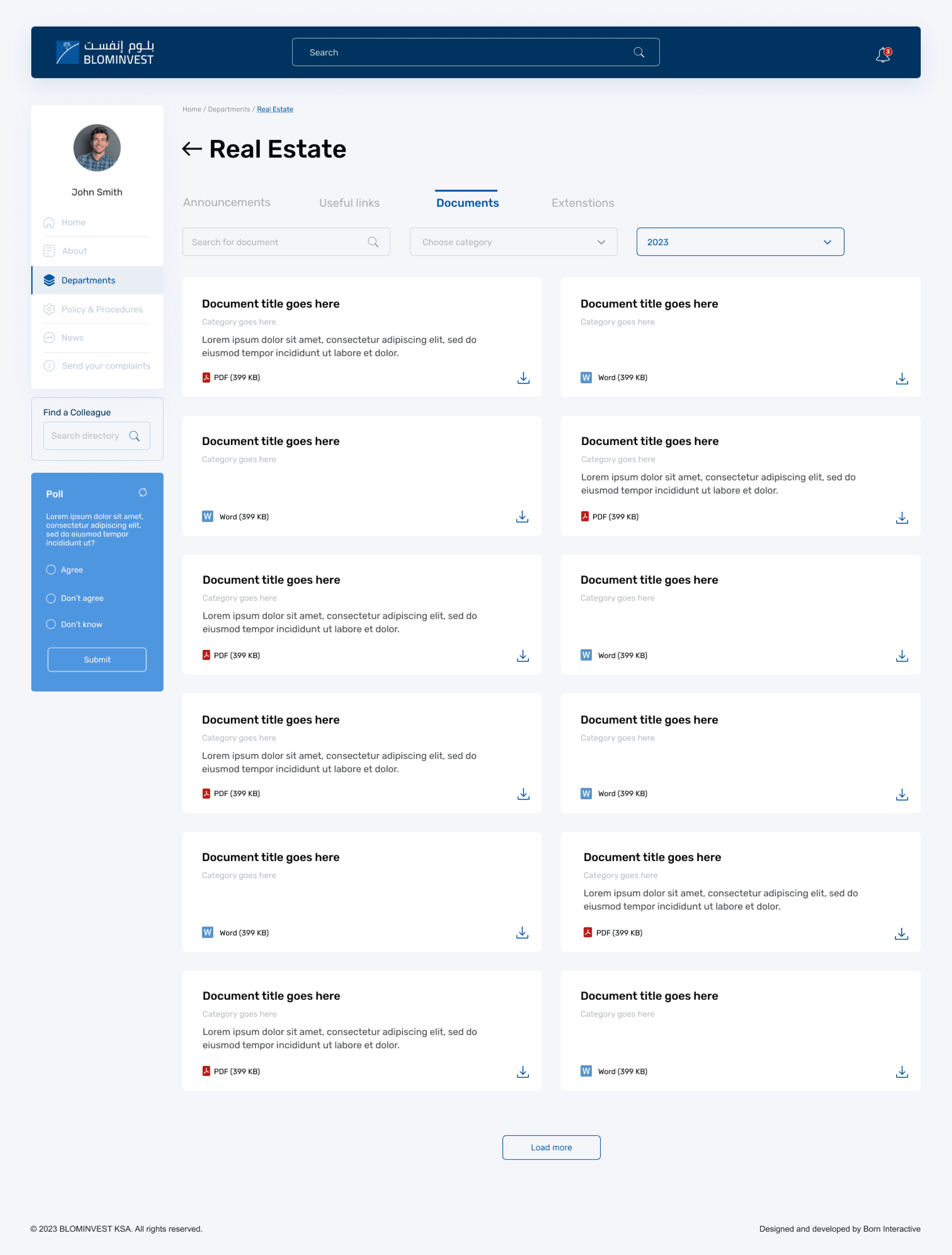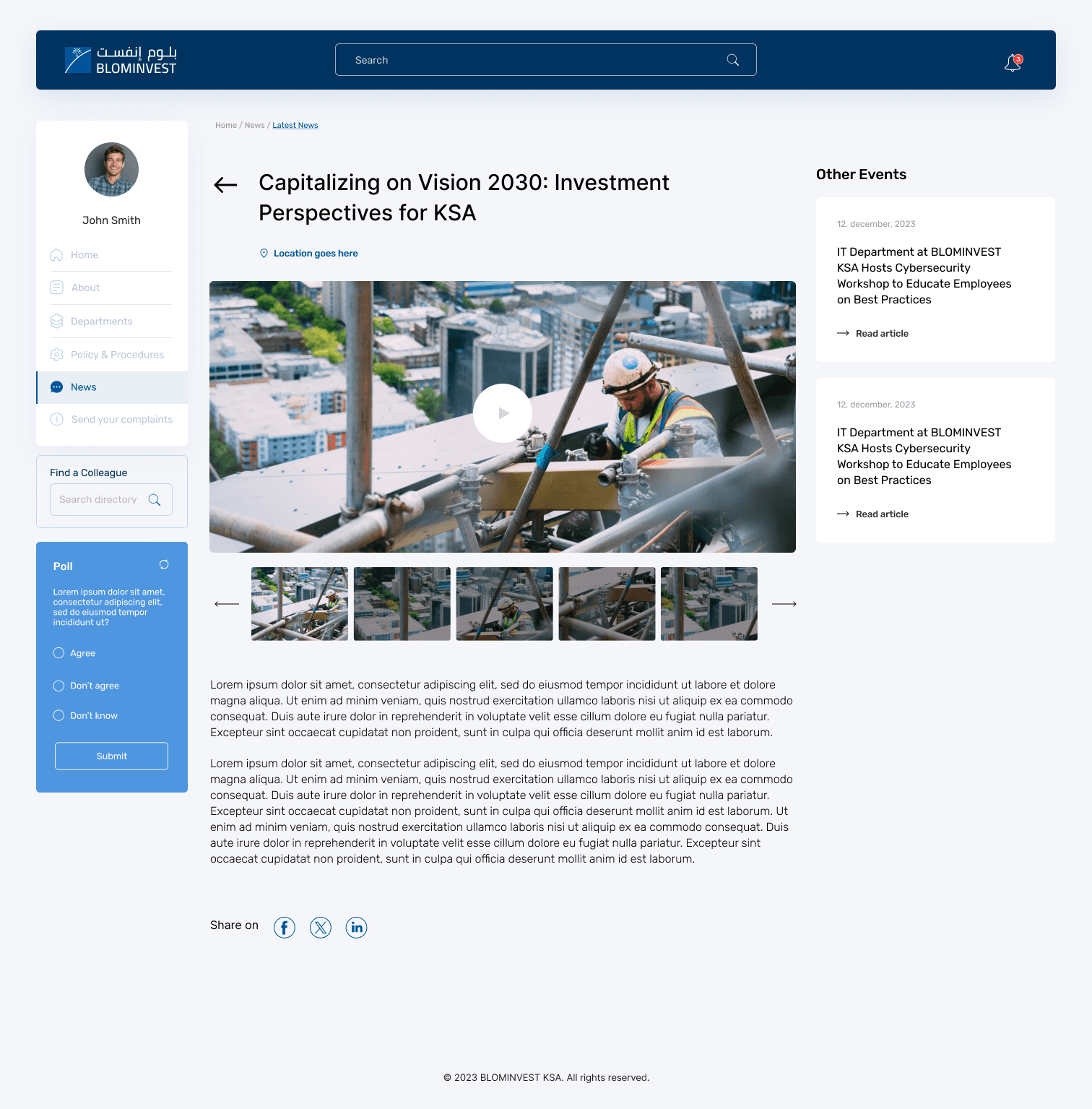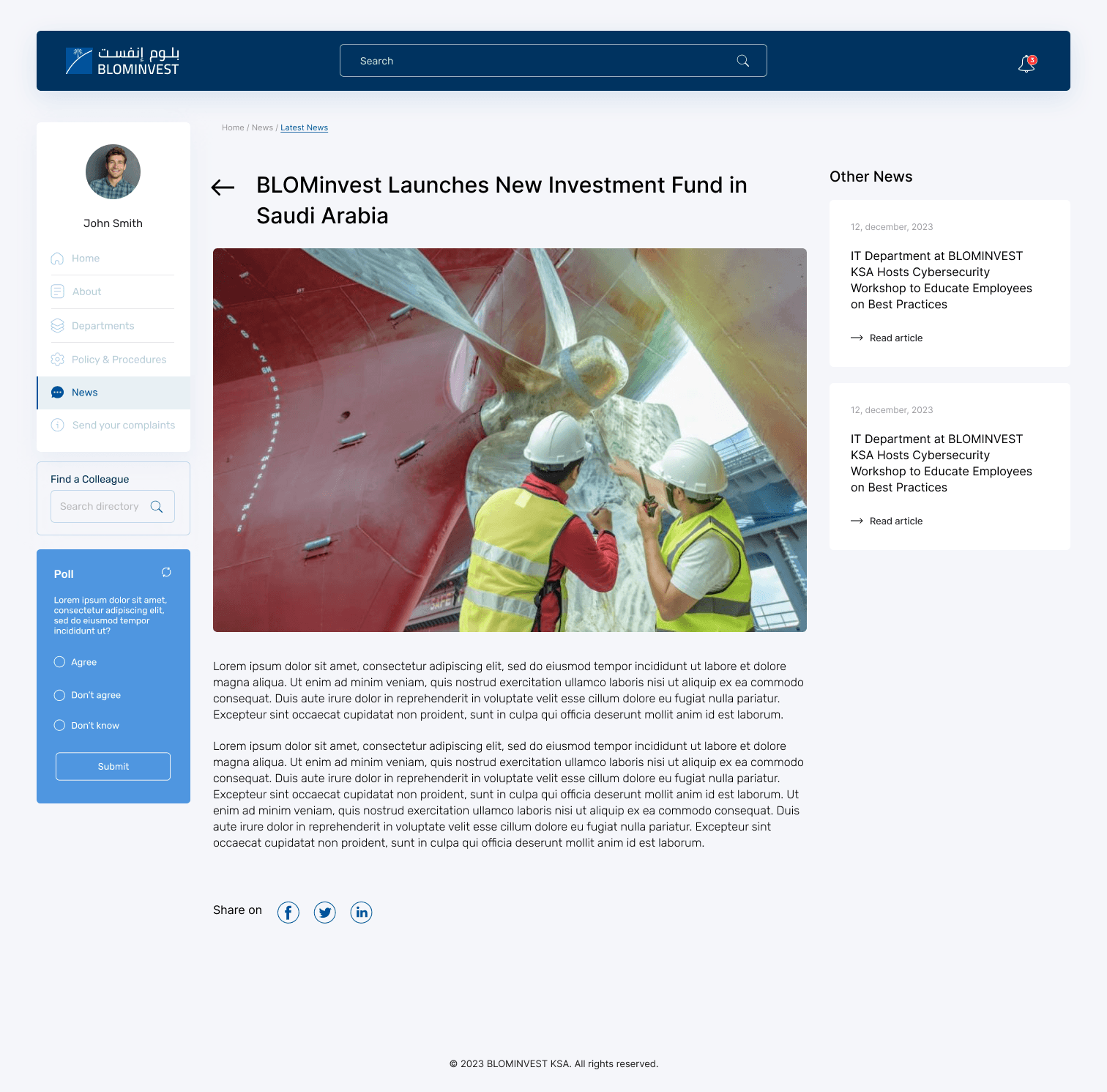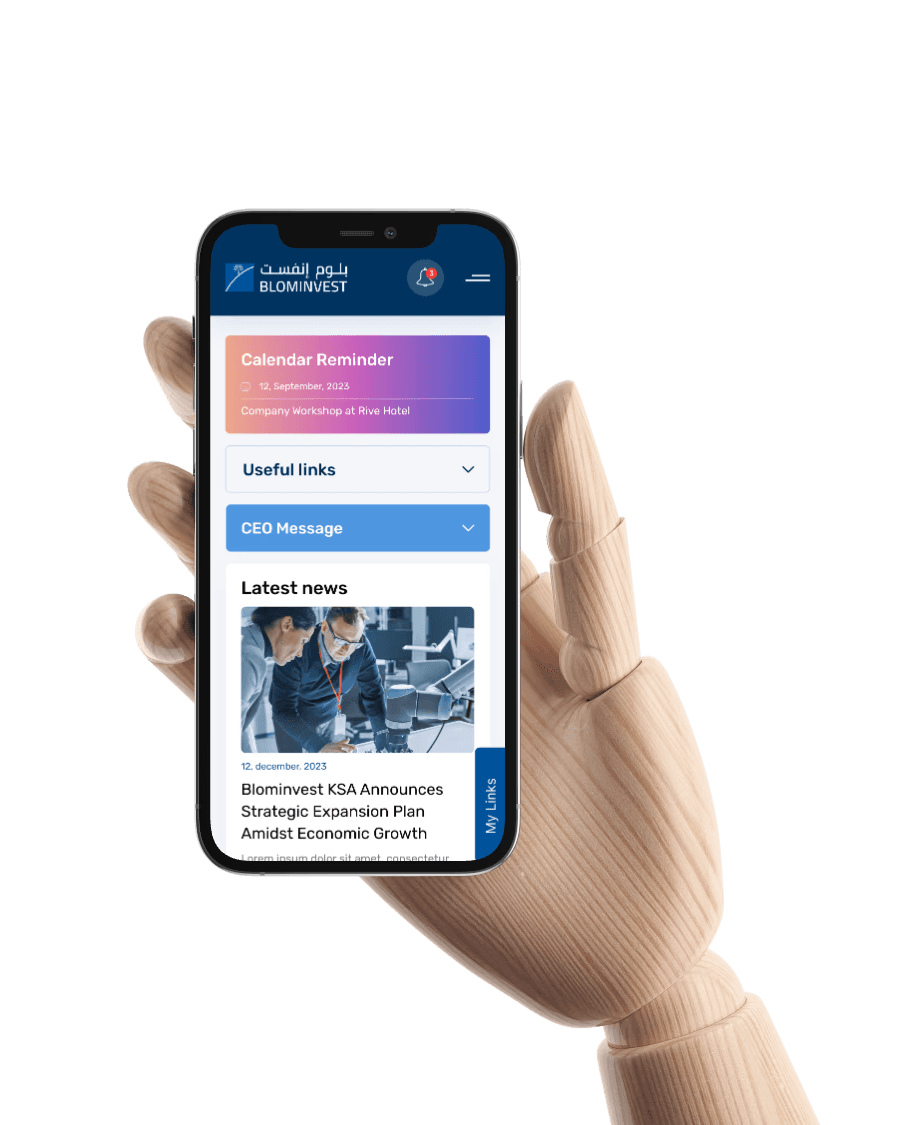
Project 3
This project was done during my time at Born Interactive for BlomInvest Bank.
The goal was to design a modern, user-friendly intranet platform for internal use by BLOM Invest employees. The platform needed to centralize news, announcements, performance updates, asset and fund management data, and internal resources, improving communication, efficiency, and access to business-critical information.
Client:
Bank Blom Invest @ Born Interactive
My Role:
research, concept ideation, design
Challenge
At BLOM Invest Bank, I led the design of a new intranet platform to transform how employees across departments access information, track fund performance, and interact with internal operations.
Outdated internal communication tools scattered across emails and shared drives
Poor information discoverability
Lack of visual hierarchy and brand consistency
No central place to track fund performance, KPIs, or department-level news
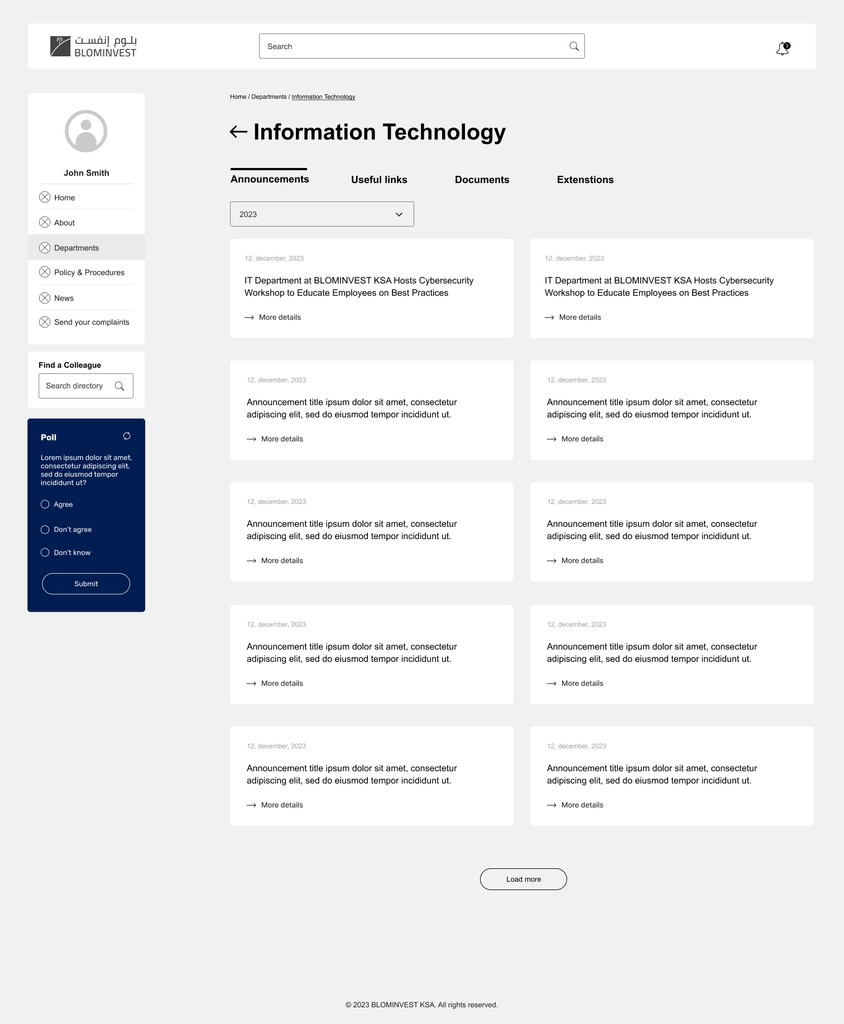
Information Architecture to Layout
From the UX work:
I created a modular grid-based layout, matching how users prioritized content: updates, funds, documents
Top navigation used predictable labels derived from card sorting sessions (e.g., “Fund Tools” vs “Asset Center”)
Components were reusable and scalable, aligned with roles and task frequency
The UI wasn’t a layer of decoration—it was the output of a user-first process. Every layout, color, and interaction reflected how BLOM Invest employees worked, thought, and moved through their tasks. The result: a visually cohesive, behaviorally intuitive system built to enhance internal efficiency.
Sustainability Thinking
Beyond environmental impact, the interface was designed for long-term maintainability and scalability.
Helped cut internal printing needs by 70%
Designed energy-efficient UI and introduced a digital-only document hub
Emphasized mental sustainability via clean layouts and information clarity
I built a reusable design system in Figma that allowed developers to implement consistent, low-maintenance components—reducing future tech debt and design rework. Each UI element was structured to be future-proof: flexible enough to accommodate evolving workflows without requiring a full redesign. This systems-based approach supports a more sustainable internal ecosystem—where design decisions can scale, adapt, and minimize waste over time.
